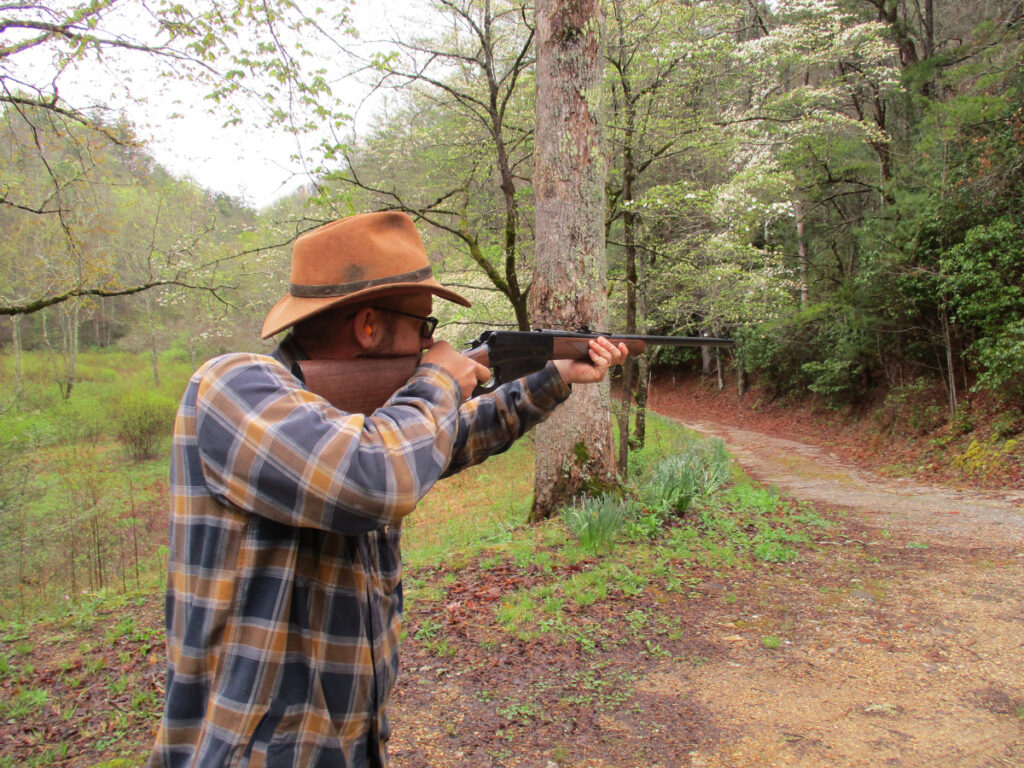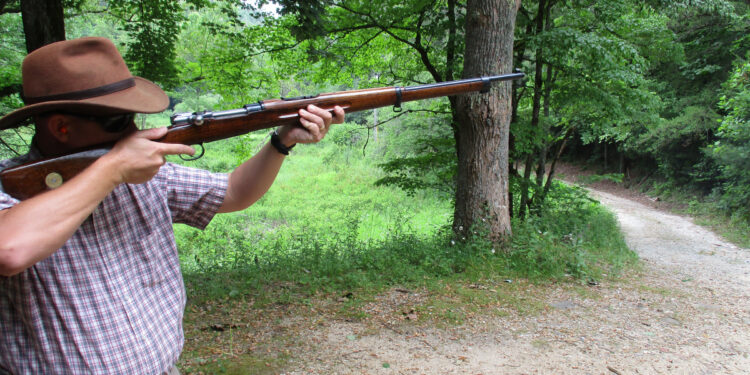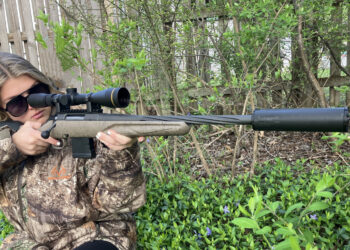Back when this country was first being settled, the pioneers were shooting their long-barreled Kentucky rifles offhand at game, in shooting matches, and in the participation of ever-present frontier warfare. Their rifles had long barrels for two important reasons: by using a light powder charge, more of the volumetric capacity of the burning black powder was reached in the long barrel so these guns could be fired with a smaller amount of noise for hostile lurking Indians to hear. If the noise could be made to sound more like a stick snapping, it would be lost among the other forest noises. The second reason was steadiness in aim. The U.S. Army once determined that 16.5 pounds was the best weight for steadiness in a gun. That’s a bit much for a young soldier with a combat pack, so they halved that weight to 8.25 pounds for the M1903 Springfield rifle, which went on to make a name for itself as one of the most accurate bolt-action rifles ever made. You can also get the effect of a heavier gun by using a long barrel like the pre-WWI Mauser rifles had. Putting the weight that far out in front of the shooter acts as leverage, giving the effect of a heavier barrel without the actual weight.
The Kentucky rifles took this to the extreme, and soon the American frontiersmen using them shot out a place in history with them. During the American Revolution, Daniel Boone shot the renegade slave Pompey at extreme long range during the siege of Boonesboro. Pompey climbed a tree at what should have been safely out of range of return fire and had begun a harassing fire campaign aiming at the general interior of Fort Boonesboro. Eventually, one of those bullets was liable to hit someone. So, Daniel Boone took him out with one carefully aimed long-range shot. The British soon learned that anyone within 200 yards of a frontier rifleman was an easy target, while the British troopers’ Brown Bess musket was, at best, a 100-yard weapon and many were so badly bored that a hit at even that short range was considered lucky.

In the War of 1812, at the battle of New Orleans, one frontiersman systematically picked off the British officers who thought they were out of range thereby destroying the British command and control of their troops. This resulted in them being unable to call their men back when the musket, rifle, and cannon fire from General Jackson’s defensive line began decimating the attacking British formations. By the time they were able to recall their Redcoats, the battle had become a massacre with huge British losses and the Chalmette Battlefield was red with the blood of the dead British.
TRAINING
Why is this history important? Because the same truths hold true today. First, the frontiersmen practiced shooting offhand. Skill at this takes practice and it requires training the muscles to hold steady. I don’t care how strong you are, your muscles are not going to hold that rifle steady naturally. I have a scoped 12-pound rifle that I hold on a mark without firing every day until the rifle gets shaky. I do this several times a day. Even though I have used dumbbells up to 110 pounds for decades, I still have to do this if I am going to get maximum accuracy. It is an old tradition dating back to before the days of the Kentucky rifle that, sadly, seems to have been forgotten in modern times.
These days, far too many hunters sight in their rifle from a rest and then strike out hunting. I have nothing against shooting from a rest. I just wish I had a rest to shoot from when I need one. In my long life, I have never been able find the time or a place to rest a rifle for an important shot. Other folks may have, but perhaps I am just unlucky that way… So, I practice shooting offhand and, preferably, at moving targets because that is the way I always end up shooting in the field. A lot of shots are not taken or if taken they are missed because men do not practice shooting offhand sufficiently, if at all.
Remember, there are only 3 ways to learn to shoot. Shooting, shooting, and more shooting. The need for practice is why I tell people to hunt with common calibers like 308 Winchester and 30-06 which are relatively inexpensive and readily available instead of the latest super expensive magnums. Unless you are very wealthy, you will not be able to practice enough with the expensive ammo to get any benefit out of whatever slight performance advantage it may offer. The difference between an exhibition shooter’s skill and the average shooter’s skill is the mountains of ammunition the exhibition shooter goes through in practice. The average person won’t shoot that much ammo for that long, even if he has the money to do it.
Offhand shooting also requires RECENT practice for best results. Some people think they can hang their gun up at the end of the hunting season and not shoot it again until next hunting season with no loss of ability. Only if that ability is low, my friends, and going hunting with low level shooting skills is inhumane to the game.
RIFLES
With some rare exceptions like the U.S. M1 carbine it is difficult to get the best results with a light rifle. This is taken to the extreme if you are tired. In the old days of African hunting when you had to feed your safari with what you shot it was not uncommon to have to run after your game before shooting it on the Veldt. This is why the older rifles made for African use were often made heavier than they needed to be for recoil mitigation. You just can’t hold a light rifle still when you are sweating and out of breath in Africa’s infernal heat. 10 or 11 pounds is about as light as you can afford to go in that situation, and 12 to 15 pounds is much steadier.
A long barrel like a Kentucky rifle has leverage to give the effect of more weight without weighing more. I have been able to put the first two shots fired offhand in one inch at 100 yards with both a mint, previously unfired, M1873 Trapdoor Springfield 45-70 and a long barreled, unaltered, 6.5 Swedish M96 Mauser with a slightly rough bore. In both cases the long barrel was a major factor in holding the gun steady enough.
After the first two shots, the groups widen with each succeeding shot as almost imperceptible fatigue sets in. I, for one, have no hesitation about hunting with a long-barreled, full-stocked rifle no matter how antiquated. Beauty is as beauty does, and all I care about is results. Why should I care about the latest styles and fads when I am out in the woods trying to put meat on the table? I want results. I want my dinner. I can’t get those results with the latest bolt action magnum sporting rifles, so I don’t hunt with them.
Whatever you shoot at or with if you are serious about bringing home the bacon, you should practice shooting offhand like Daniel Boone and Davey Crockett did. In their day no one was considered a competent shot unless he could shoot offhand accurately. That still holds true.












